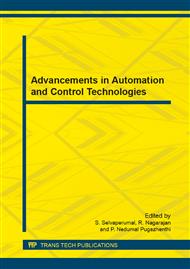p.471
p.477
p.483
p.489
p.495
p.501
p.511
p.519
p.523
Robust Face Recognition from NIR Dataset via Sparse Representation
Abstract:
A biometric identification system may be a pc application for mechanically distinctive or confirmative of an individual from a digital image or a video frame from a video supply. One in all the ways that to try and do this can be by examination designated face expression from the image and a facial information. This paper planned dynamic face recognition from near-infrared images by exploitation sparse representation classifier. Most of the prevailing datasets for facial expressions are captured in a very visible light spectrum. However, the visible light (VIS) will modify with time and placement, causing important variations in look and texture. This new framework was designed to attain strength to pose variation and occlusion and to resolve uncontrolled environmental illumination for reliable biometric identification. This paper gift a unique analysis on a dynamic facial features recognition, exploitation near-infrared (NIR) datasets and LBP(Local binary patterns) feature descriptors. It shows sensible and strong results against illumination variations by exploitation infrared imaging system.
Info:
Periodical:
Pages:
495-500
Citation:
Online since:
June 2014
Authors:
Price:
Сopyright:
© 2014 Trans Tech Publications Ltd. All Rights Reserved
Share:
Citation:


